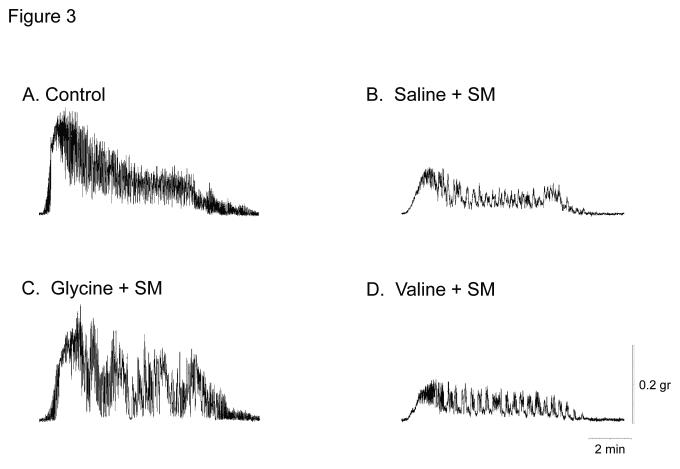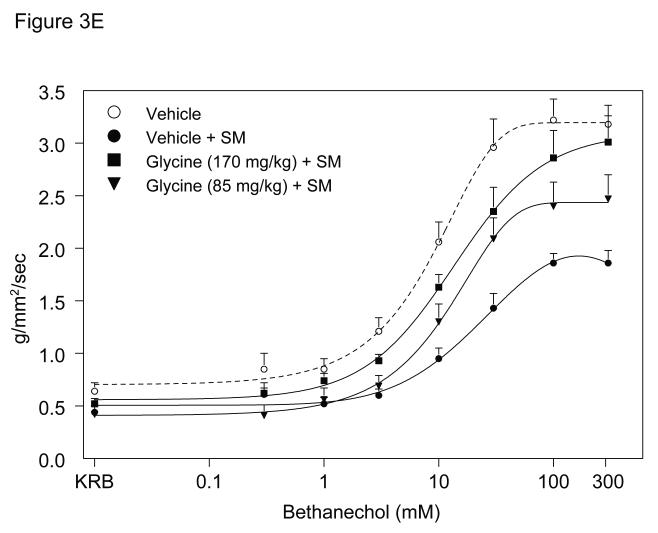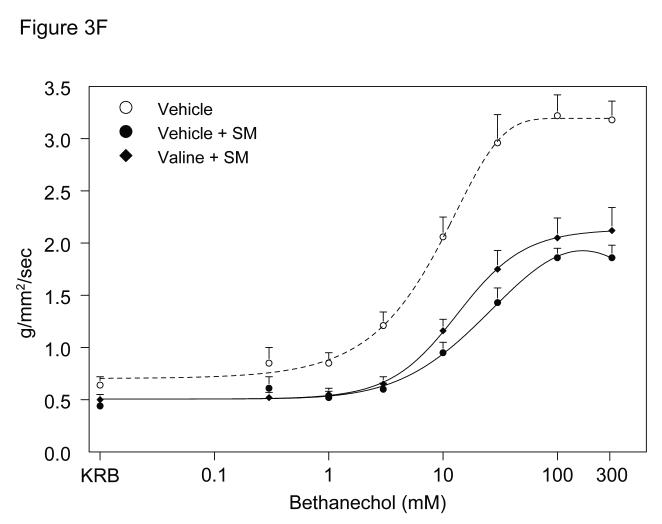Figure 3.
A. Representative bethanechol stimulated (100 μM) rat jejunal circular smooth muscle contractile activity recorded in an organ bath 24 hours after surgical manipulation (SM). A vigorous contractile response is observed in vehicle injected rat controls (Panel A). Intestinal manipulation in vehicle animals caused a distinct reduction of the contractile response to bethanechol (Panel B), whereas manipulated rats after glycine pretreatment (Panel C) presented with only a mild reduction in bethanechol stimulated contractile activity. Valine pretreated animals also exhibited a distinct reduction of the contractile response to bethanechol (Panel D). Figure 3, Panel E and F, shows bethanechol dose response curves of jejunal circular smooth muscle contractile activity 24 hours after surgical manipulation (SM) with glycine or valine pretreatment. ( ○ ) shows a robust control response curve calculated from control vehicle jejunal muscles. Surgical manipulation with saline pretreatment significantly decreased muscle contractility ( ● ). Glycine pretreatment at both 85 mg/kg ( ▼) and 170 mg/kg ( ■ ) dose dependently prevented the suppression in muscle contractility. Figure 3, Panel F, illustrates that valine pretreatment did not markedly change in vitro muscle contractility. (n = 8 per group, data are expressed as mean ± SEM).



